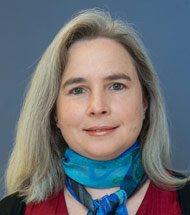Arantxa González Miqueo, Researcher at CIMA University of Navarra and CIBERCV and mentor at group Women for Science and Technology
Women and Science: Looking to the past to move into the future
Once again, on February 11, we celebrate the International Day of Women and Girls in Science: a date promoted by the UN to highlight the achievements of women in this field and encourage scientific vocations in girls.
 The mere existence of this date highlights the inequalities still present in this field. This does not prevent us from recognizing the achievements made in recent years thanks to the sacrifice and effort of the women researchers who preceded us and all those who supported them.
The mere existence of this date highlights the inequalities still present in this field. This does not prevent us from recognizing the achievements made in recent years thanks to the sacrifice and effort of the women researchers who preceded us and all those who supported them.
Much progress has been made since the days when women's discoveries were hidden or usurped by their male colleagues. I would like to think that blatant injustices such as those of Rosalind Franklin -she was core topic in the finding of DNA and her finding was finally attributed only to doctors J. Watson and F. Crick-, Esther Lederberg - she made pioneering programs of study of microbial Genetics thanks to which her husband won the award Nobel Prize in Medicine - or Lise Meitner - who contributed significantly to the finding of nuclear fission and the recognition was received only by her partner of laboratory, Otto Hahn - would no longer happen today.
Undoubtedly, the training and development professional opportunities that my generation has enjoyed are considerably greater than those of our predecessors. However, although theoretically we are on an equal footing, data shows that there is still a clear under-representation of women in positions of responsibility, university governance positions and in the management of research groups.
The balance between the issue of men and women in some careers (especially in health-related careers), at Degree and even at doctorate, breaks down as we move up the development career ladder: the higher we climb, the fewer women we find in positions of responsibility, decision-making and management.
Nor can we forget that women scientists face a series of prejudices-sometimes intentional and mostly unconscious-that must be overcome. In this context, policies to promote equal opportunities and eliminate the barriers that still persist are necessary. Likewise, it is urgent to implement strategies aimed at reconciling family and work life that do not professionally penalize those women who decide to combine degree program and motherhood.
Leaving theory and good intentions aside, how can we help improve the participation and visibility of women in this field and encourage girls to take an interest in careers in science and technology? It is not a simple problem to tackle, since inequalities are caused by historical, social and educational factors. To focus on a topic, I would highlight the problem of the historical lack of visibility of women and the lack of female role models. If we make a survey in our environment on famous scientists almost certainly 95% (or 100%) of the names that come to mind are men. test of this is the enormous disproportion in the awarding of Nobel Prizes in scientific disciplines between men and women.
programs of study Recent studies show that when boys are asked to draw a picture of a scientist, the vast majority draw a middle-aged, bald, bespectacled man in a white coat. Although an anecdotal example, the mere stereotypical view may unconsciously influence girls' interest....
In this context, many universities and institutions around the world have managed to get women researchers with an established degree program to support, advise and share their experience with young women interested in science, providing them with a forum to discuss their expectations, fears and concerns, helping them to gain confidence in themselves and their abilities. At the University of Navarra this forum is called Women for Science and Technology: a group of students that was born in 2017 to provide them with a space where they can gain visibility, have contact with their referents and share concerns.
All in all, I look to the future with hope. area My research issue has seen an increase in the number of women leading their own groups, as well as greater participation and visibility in scientific forums and panels. These data suggest that we are on the right track; that we will see a major transformation as a more egalitarian generational turnover occurs. With the commitment and involvement of society as a whole, we will continue to advance, perhaps slowly but surely, towards the real equality of men and women in science.
